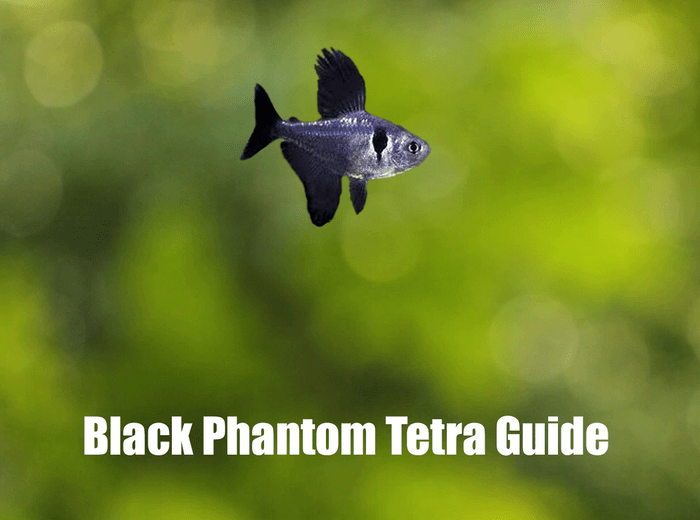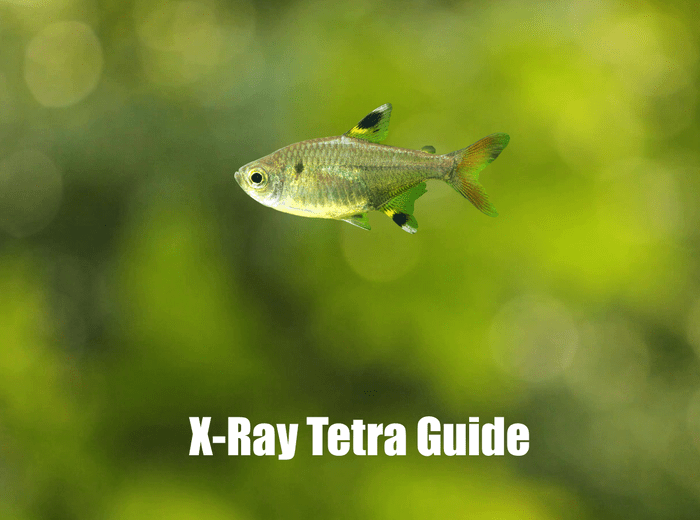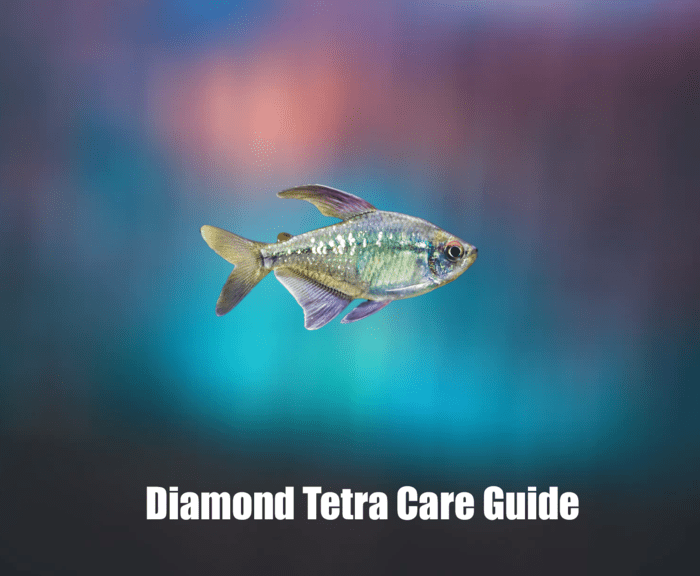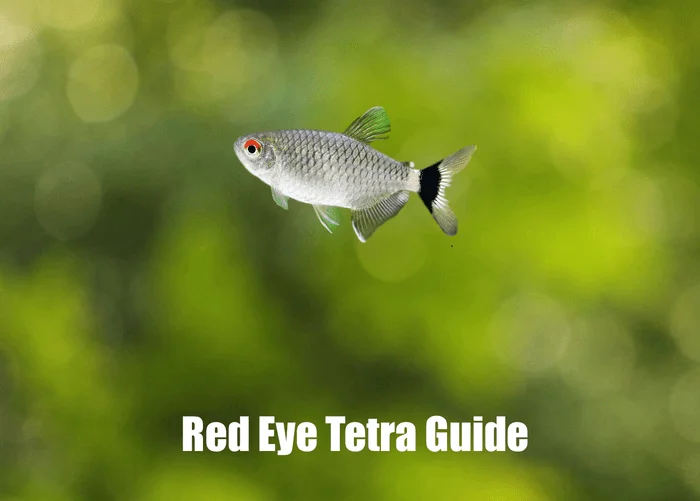Complete Care Guide for Buenos Aires Tetras: Creating a Healthy Habitat

Introduction
If you’re considering adding Buenos Aires Tetra to your aquarium, or if you’re already a proud owner, this comprehensive guide is for you. Buenos Aires Tetras, known scientifically as Hyphessobrycon anisitsi with their vibrant colors and dynamic presence, are a popular choice for freshwater aquarium enthusiasts. This guide will walk you through all the essentials of Buenos Aires Tetra care, from tank setup to diet, ensuring your fish not only survive but thrive.
Understanding Buenos Aires Tetras
Origin and Characteristics
Originating from the lush, vegetated river systems of South America, Buenos Aires Tetra, scientifically known as Hyphessobrycon anisitsi, exhibit remarkable resilience and versatility, traits that have contributed to their popularity in the aquarium hobby. These tetras are predominantly found in the expansive waters of the Paraná and Uruguay River basins, navigating through countries such as Brazil, Paraguay, Uruguay, and Argentina. Their natural habitat, characterized by dense aquatic vegetation and a rich ecosystem, provides the perfect backdrop for the vibrant life these fish lead.
On reaching maturity, Buenos Aires Tetras typically measure about 2.5 inches in length, presenting a sleek and streamlined appearance. Their bodies shimmer with a silver base color, subtly infused with pink undertones, catching the light and the eye of any observer. A striking black line stretches horizontally along the length of their bodies, adding a bold contrast to their delicate coloring. This feature is one of the most distinctive markers of the species, making them easily identifiable among other tetra species.
The fins of the Buenos Aires Tetra add another layer of visual interest, usually displaying vivid shades of red or orange. These colorful accents not only enhance their overall aesthetic appeal but also reflect the vibrant biodiversity of their South American roots. The interplay of colors and patterns on their bodies serves as a testament to the rich and varied environments from which they originate.
In addition to their physical attributes, Buenos Aires Tetras are celebrated for their energetic and gregarious nature. They are schooling fish, thriving in groups where their social behavior can be fully observed. This communal living not only mimics their natural social structures but also contributes to a dynamic and engaging aquarium environment. Their hardiness and adaptability make them suitable for a wide range of tank conditions, appealing to both novice and experienced aquarists alike.
Their diet in the wild consists of small insects, crustaceans, and plant matter, a versatility that translates well to captivity, where they readily accept a variety of foods. This omnivorous appetite further underscores their adaptability and ease of care, making them a delightful addition to any community tank.
Also, Buenos Aires Tetras bring a slice of South American vibrancy to the home aquarium. Their striking appearance, coupled with their lively demeanor and robust nature, makes them an enduring favorite among fish enthusiasts. As ambassadors of their native rivers, they offer a glimpse into the rich aquatic life of the Paraná and Uruguay basins, adding beauty and diversity to aquatic collections around the world.
Behavior and Tank Mates
Buenos Aires Tetras are schooling fish and are known for their active swimming and hardiness. However, they can be nippy, so they should be kept with similarly sized or larger fish. Some common and suitable tank mates for these Tetra include:
- Other Tetras: Species like Black Skirt Tetras or Neon Tetras can be good companions, as they are also schooling fish.
- Barbs: Fish like Cherry Barbs or Tiger Barbs, which are similarly active and hardy, can coexist well.
- Danios: Zebra Danios, known for their hardiness and speed, can keep up with the active Buenos Aires Tetras.
- Corydoras Catfish: These bottom dwellers are peaceful and can share the tank without competing for space.
- Larger Characins: Fish that are larger but not aggressive, such as larger Characins, can be suitable.
- Rainbowfish: These are peaceful, active, and can match the Buenos Aires Tetras in swimming.
- Loaches: Some species of loaches that are peaceful and robust can be good choices.
Remember, while choosing tank mates, consider factors like water parameters, size, temperament, and dietary needs to ensure a harmonious aquarium. Also, always introduce new fish gradually and monitor their interactions to ensure a peaceful environment. 🐠
Setting Up the Perfect Tank
Tank Size and Conditions
A 30-gallon tank is recommended for a school of Buenos Aires Tetras, providing ample space for swimming and group dynamics. Buenos Aires Tetra thrive in specific water conditions that mimic their natural habitat. Maintaining ideal water parameters is the key to ensuring their health and well-being in a home aquarium. Here’s a breakdown of their ideal water conditions:
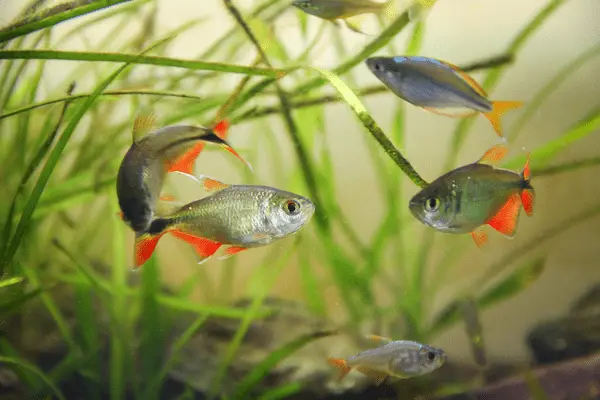
- Temperature: 64-82°F (18-28°C). They tolerate a wide range of temperatures but prefer cooler water compared to typical tropical fish.
- pH Level: 5.5 to 8.5. They are adaptable to various pH levels, but a slightly acidic to neutral range is ideal.
- Water Hardness: 5-20 dGH. They can handle a range of hardness levels but thrive in moderately soft to moderately hard water.
- Water Quality: Regular water changes are important to keep the nitrate levels low and maintain good water quality.
- Nitrate Levels: Keeping nitrate levels low is important, as high levels can be harmful. Aim to keep nitrates below 20 ppm.
- Ammonia and Nitrite Levels: Both ammonia and nitrite should always be at 0 ppm. Even small amounts of these can be toxic to fish.
These parameters reflect their adaptability and hardiness, making Buenos Aires Tetras a versatile choice for both beginner and experienced aquarists.
Lighting and Decor
- Moderate to Bright Lighting: Buenos Aires Tetras are adaptable to various lighting conditions, but moderate to bright lighting is preferred to promote healthy plant growth.
- Natural Light Cycles: Mimic natural day and night cycles with around 10-12 hours of light per day.
- Plants: Robust, hardy plants like Java Fern or Anubias are ideal, as Buenos Aires Tetras may nibble on delicate plants.
- Substrate: A darker substrate can enhance the natural colors of the fish.
- Hiding Places: Include driftwood, rocks, and caves for shelter and to create a natural-looking environment.
- Open Swimming Space: Ensure there is ample space for active swimming.
The key is to create a natural, stimulating environment that caters to their active swimming nature and occasional fin-nipping behavior
Diet and Nutrition
Feeding Habits
Buenos Aires Tetras are omnivorous. A varied diet of high-quality flake food, brine shrimp, bloodworms, and vegetable matter will ensure they receive all the necessary nutrients
Feeding Schedule
Feed them small amounts once or twice a day, being careful not to overfeed.
Health and Wellness
Breeding Tips
Breeding Buenos Aires Tetras can be a rewarding experience. Here are some tips to help you:
- Setup a Breeding Tank: Prepare a separate tank with soft, acidic water (pH around 6.0-7.0) and a temperature of about 77°F (25°C). The tank should be dimly lit and contain fine-leaved plants or a spawning mop for egg laying.
- Condition the Breeders: Feed the breeding pair high-quality live or frozen foods to condition them for spawning.
- Identifying Sexes: Females are usually plumper, especially when ready to spawn, while males are more colorful with longer fins.
- Spawning Process: Introduce the conditioned male and female to the breeding tank. Spawning often occurs in the early morning. The female scatters eggs among the plants, which the male then fertilizes.
- Post-Spawning Care: After spawning, remove the adult fish to prevent them from eating the eggs. The eggs typically hatch in about 24-36 hours.
- Rearing Fry: Initially, feed the fry infusoria or commercially available liquid fry food. As they grow, transition to baby brine shrimp and finely crushed flake food.
- Water Quality: Maintain clean and stable water conditions in the fry tank with regular partial water changes.
Breeding Buenos Aires Tetras requires patience and attention to detail, but observing the development of the fry can be an immensely gratifying experience
Common Health Concerns
Buenos Aires Tetras, like their tetra counterparts, are prone to several health challenges that are common in the aquarium setting, notably ich (Ichthyophthirius multifiliis), a parasitic infection known colloquially as white spot disease, and various fungal infections. These ailments, while treatable, underscore the importance of vigilant tank management and the maintenance of optimal water quality to prevent outbreaks and ensure the well-being of your fish.
Ich manifests as tiny, white, salt-like spots covering the fish’s body and gills, leading to irritation that causes affected fish to rub against tank decorations or substrate. Left untreated, ich can severely impact the respiratory function of Buenos Aires Tetras and can be fatal. Fungal infections, on the other hand, present as white or cottony growths on the skin, fins, or mouth of the fish, often developing from pre-existing wounds or stress-induced vulnerabilities.
The key to preventing these health issues lies in rigorous adherence to proper aquarium practices. Regularly testing the water for ammonia, nitrite, and nitrate levels, and keeping these within safe ranges, is fundamental. The ideal water temperature for Buenos Aires Tetras is between 64°F to 82°F (18°C to 28°C), with a pH range of 5.5 to 8.5, though stability within these parameters is more crucial than the precise values themselves.
Regular water changes, typically 25-50% every two weeks, depending on the tank’s bioload, help remove waste products and dilute potential pathogens. A well-functioning filtration system is essential to maintain clean water and adequate oxygen levels. Additionally, quarantining new fish or plants before introducing them to the main tank can prevent the introduction of diseases.
A balanced diet also plays a pivotal role in the health of Buenos Aires Tetras. A mix of high-quality flake food, freeze-dried, and live foods not only meets their nutritional needs but also boosts their immune system, making them less susceptible to diseases.
Moreover, creating a stress-free environment by providing plenty of hiding spaces with plants and decorations, and ensuring the tank is not overcrowded, can significantly enhance the overall health and resilience of Buenos Aires Tetras. Stress is a known precursor to many aquarium fish diseases, and minimizing stress through proper tank management and care is essential for a healthy aquarium.
In essence, while Buenos Aires Tetras may encounter common aquatic diseases, proactive and informed care, focused on pristine water quality and a stress-free environment, can mitigate these risks, allowing your tetras to thrive. Adopting these practices will not only contribute to the health of your Buenos Aires Tetras but also enhance the enjoyment and satisfaction derived from your aquarium hobby.
Life Expectancy
With proper care and following this detailed guide, Buenos Aires Tetras can live 3-5 years.
Frequently Asked Questions
Buenos Aires Tetras can grow up to about 2.5 to 3 inches (6.35 to 7.6 cm) in length.
It’s recommended to keep them in groups of at least 5 to 6 to promote healthy social behavior and minimize stress.
Yes, Buenos Aires Tetras are known to be hardy fish, adaptable to a range of water conditions, making them suitable for both novice and experienced aquarists.
Males are generally slimmer and more brightly colored than females. Females tend to have a rounder body, especially when gravid.
Buenos Aires Tetra Wrap Up
In conclusion, Buenos Aires Tetras stand out as a truly delightful addition to any community aquarium, captivating enthusiasts with their dynamic beauty and spirited activity. Their resilience and vibrant appearance, characterized by striking colors and lively schooling behavior, make them an attractive choice for both novice and seasoned aquarists alike. By dedicating yourself to providing the right environment and attentive care, you set the stage for these enchanting fish to flourish and reveal their full potential.
Ensuring the well-being of Buenos Aires Tetras involves maintaining high water quality, with regular monitoring and adjustments to keep parameters within their preferred range. A balanced diet, combining quality flake foods with live or frozen varieties, supports their health and enhances their vibrant colors. Furthermore, replicating their natural habitat with ample space for swimming and areas of dense planting encourages their natural behaviors and contributes to a stress-free life.
Their sociable nature makes Buenos Aires Tetras excellent candidates for community tanks, where they can interact with other peaceful species in harmonious coexistence. However, their tendency to nibble on live plants means selecting tank mates and plant species that can thrive alongside them is essential. By considering these factors, you can create a diverse and engaging aquarium ecosystem that mirrors the richness of their native South American rivers.
Engagement with Buenos Aires Tetras extends beyond basic care; observing their interactions and enjoying their playful antics can provide endless fascination and a deeper connection to the natural world. Their ability to adapt to various conditions, coupled with their striking appearance, offers a rewarding experience for those who welcome them into their aquatic families.
In sum, Buenos Aires Tetras embody the joy and beauty that fishkeeping can bring to our lives. By committing to the principles outlined in this care guide, you’re not just ensuring a vibrant and healthy life for your Buenos Aires Tetras; you’re also embarking on a rewarding journey that enhances the tranquility and aesthetic appeal of your home. Embrace the journey of caring for Buenos Aires Tetras, and in return, enjoy the dynamic beauty and activity that these remarkable fish bring to your community aquarium.
Share Your Tetra Experiences
Do you have any stories or tips about your Tetra tank? Share them in the comments below!
Help Others Discover This Guide
Navigate the Tetra in your tank with confidence. This guide is your pathway to creating a vibrant and healthy aquatic showcase. Enjoy the dazzling colors and lively nature of these unique fish!


